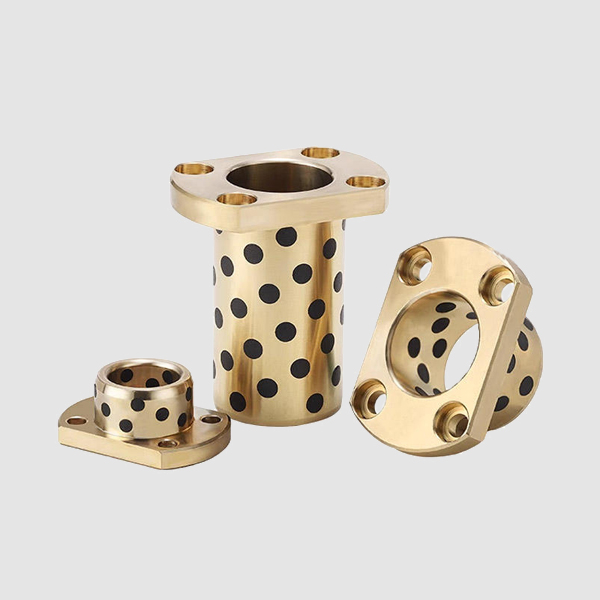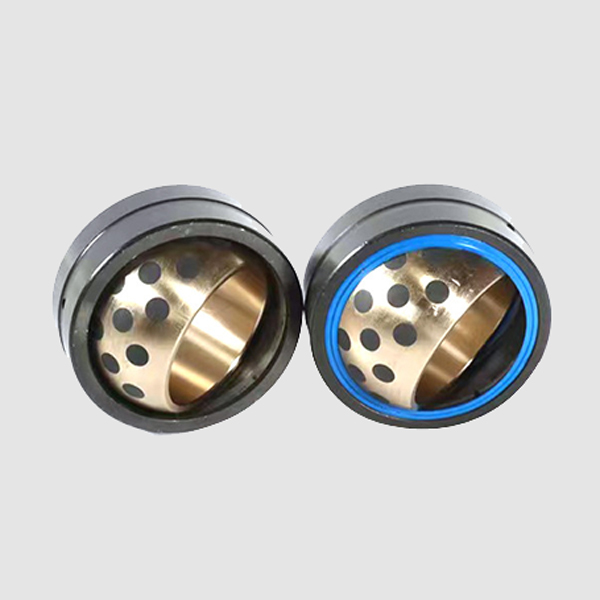Introduction to Self-Lubricating Bearings
Self-lubricating bearings are specially designed bearings that do not require external lubrication, such as oils or greases. Instead, these bearings have an integrated lubrication system that automatically provides a steady supply of lubricant during operation. This unique feature ensures smooth movement and reduces wear and tear over time.
In many industries, traditional bearings require constant maintenance and lubrication, which can be time-consuming and costly. Self-lubricating bearings eliminate these issues, offering a solution that reduces downtime, maintenance costs, and improves operational efficiency.
Key Benefits
- No need for external lubrication
- Long operational life
- Reduced maintenance and downtime
- Increased energy efficiency
Key Features of Self-Lubricating Bearings

Integrated Lubrication System
Self-lubricating bearings feature a built-in lubrication mechanism that releases a controlled amount of lubricant over time. This ensures smooth operation without the need for manual lubrication or the risk of running dry.
Advanced Materials
Our self-lubricating bearings are made using high-quality materials, including high-performance polymers, composites, and metal alloys. These materials are carefully select to ensure long-lasting durability and optimal performance under different operating conditions.
Low Friction
The advanced materials and lubrication systems significantly reduce friction, which helps prevent wear and tear, increases energy efficiency, and extends the lifespan of both the bearing and the associated machinery.
Corrosion Resistance
These bearings are engineered to resist corrosion and wear, even in harsh environments. Whether expose to moisture, chemicals, or high temperatures, our self-lubricating bearings provide reliable performance in challenging conditions.
Types of Self-Lubricating Bearings






Applications of Self-Lubricating Bearings
Automotive Industry
Self-lubricating bearings are essential in automotive systems, where they are used in gearboxes, suspension systems, engine parts, and more. By reducing the need for regular lubrication, they help improve engine efficiency, reduce maintenance costs, and extend the lifespan of critical components.
Industrial Machinery
In industrial machinery, self-lubricating bearings are use in conveyors, robots, pumps, and other automated equipment. Their ability to function without external lubrication reduces downtime and improves reliability in harsh working conditions.
Electronics & Appliances
In consumer electronics and household appliances such as washing machines, fans, and vacuum cleaners, self-lubricating bearings provide quiet, efficient operation with minimal maintenance.
Marine & Aerospace
In the marine and aerospace sectors, where regular lubrication is often challenging, self-lubricating bearings are use in engines, propellers, and various other components. These bearings are resistant to saltwater, extreme temperatures, and other harsh conditions.
Construction & Mining Equipment
Heavy-duty equipment such as bulldozers, cranes, and mining machinery relies on self-lubricating bearings to ensure that components perform reliably under high-load conditions, with minimal risk of failure and lower maintenance requirements.
Benefits of Self-Lubricating Bearings

Reduced Maintenance Costs
Since self-lubricating bearings require no external lubrication, the need for costly lubrication maintenance is eliminated. This saves both time and money on upkeep, making them a cost-effective solution.
Increased Lifespan
These bearings last longer than traditional bearings due to their built-in lubrication and low friction. As a result, they provide a higher return on investment by reducing the frequency of replacements.
Energy Efficiency
Low friction means that self-lubricating bearings help reduce the amount of energy required to keep equipment running. This leads to improve energy efficiency and lower operational costs.
Environmentally Friendly
Because they do not require oils, greases, or other hazardous lubricants, self-lubricating bearings are a more sustainable choice for businesses looking to reduce their environmental footprint.
Why Choose Our Self-lubricating Bearings?
High-Quality Materials and Manufacturing Standards
Competitive Pricing
Global Reach with Fast Delivery
Durability and Performance
Expertise and Custom Solutions
Technical Support and After-Sales Service
Frequently Asked Questions (FAQ)
- What is the lifespan of a self-lubricating bearing?
The lifespan depends on the application, load, and operating conditions. Generally, self-lubricating bearings last longer than traditional bearings due to reduced friction and wear.
- Can self-lubricating bearings be used in extreme temperatures?
Yes, certain types of self-lubricating bearings, such as graphite-based bearings, are design to perform well in high-temperature environments, making them ideal for industrial and automotive applications.
- Are self-lubricating bearings suitable for heavy-load applications?
Yes, we offer metal-backed self-lubricating bearings that are specifically designed for high-load applications. These bearings are ideal for heavy machinery, automotive systems, and industrial equipment.
- What materials are commonly used in self-lubricating bearings?
Common materials include PTFE (Teflon), POM, graphite, and composite materials. Each material offers unique benefits, such as low friction, high temperature resistance, and wear resistance.
- How do self-lubricating bearings compare to traditional bearings?
Unlike traditional bearings that require external lubrication, self-lubricating bearings have built-in lubrication, reducing maintenance and extending the lifespan of the bearing and associated machinery.
Self-lubricating bearings offer exceptional durability, efficiency, and cost savings. Whether for automotive, industrial, or marine applications, our bearings can meet the toughest demands with minimal maintenance. Contact us today to learn more about how our self-lubricating bearings can benefit your business.